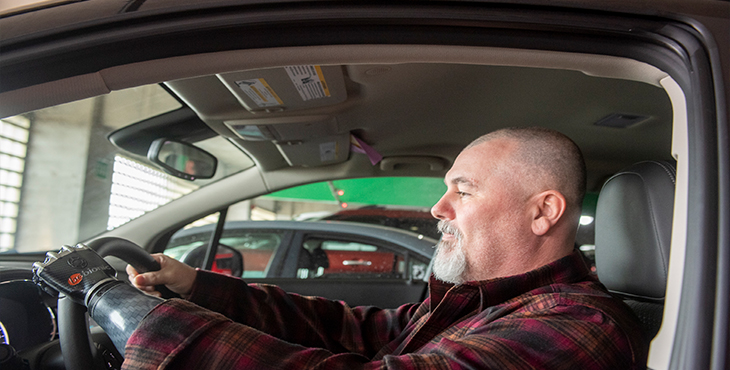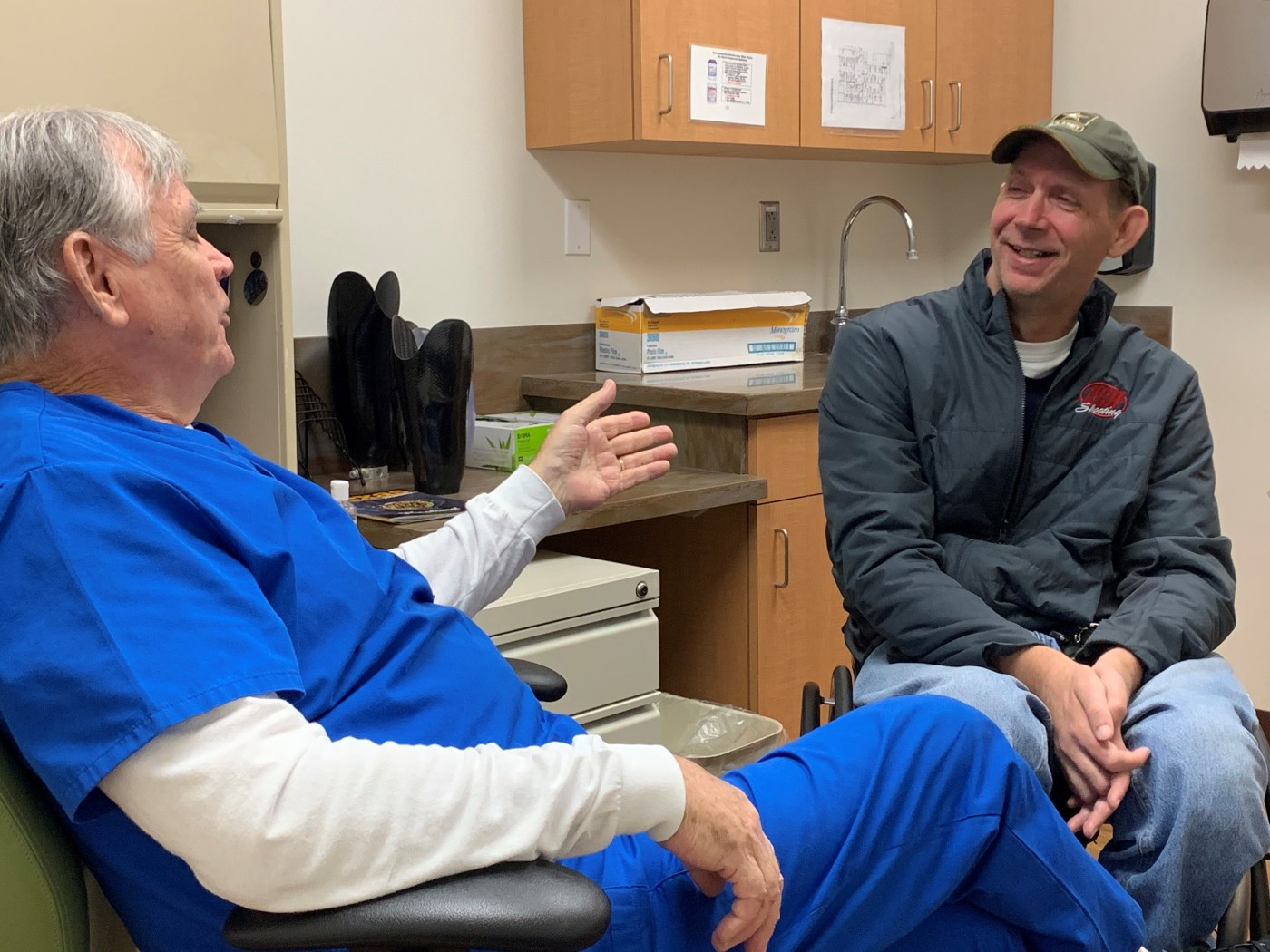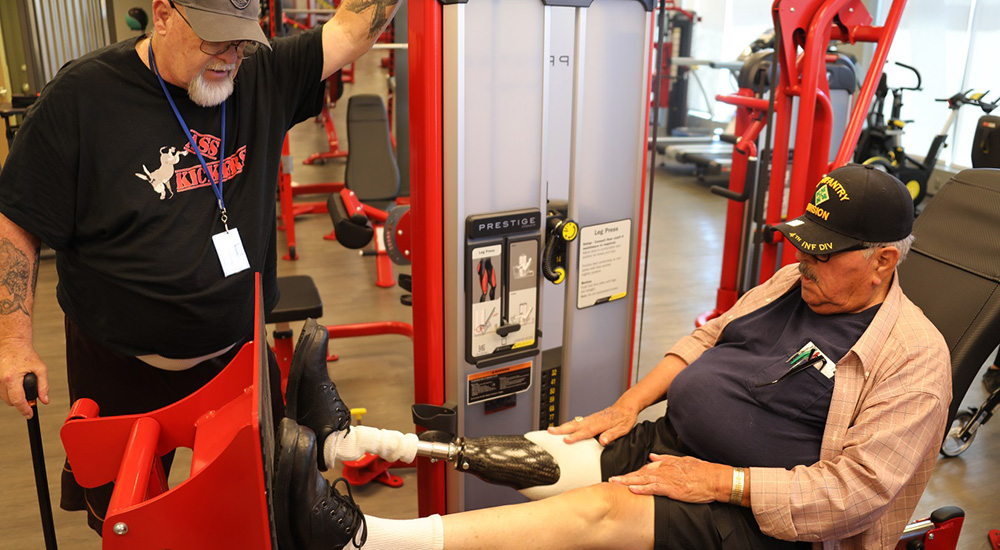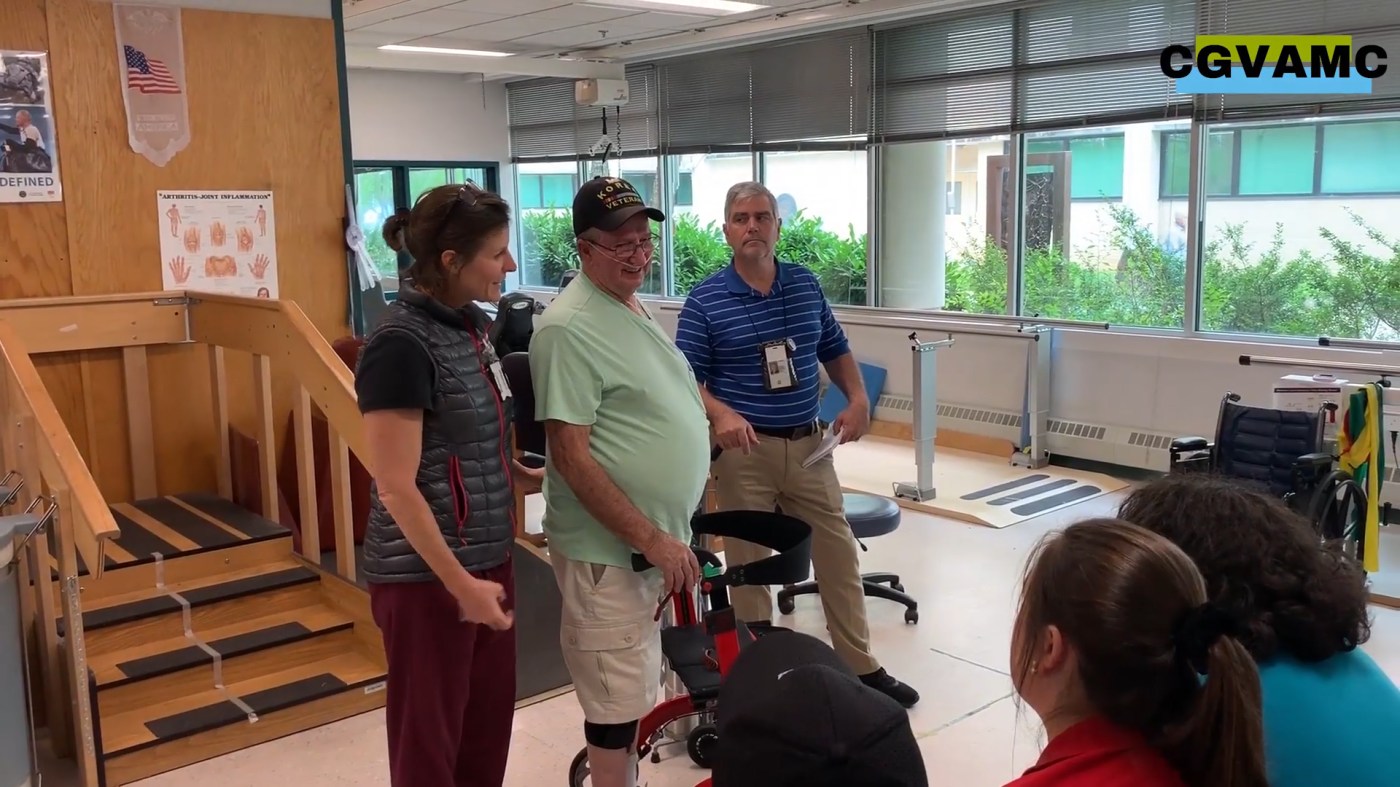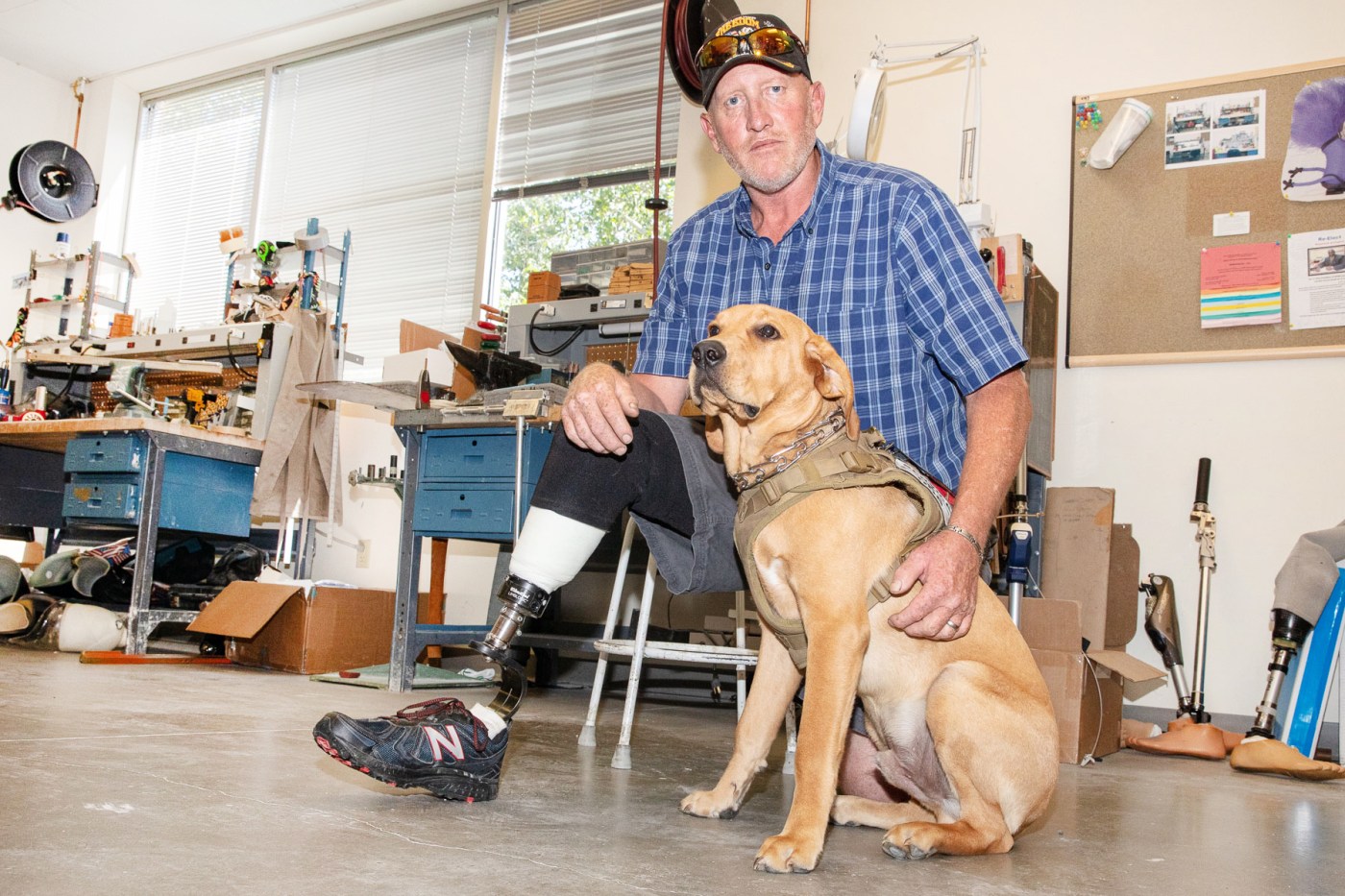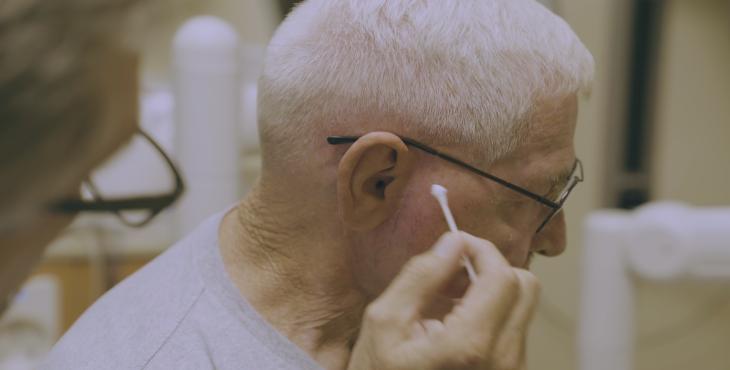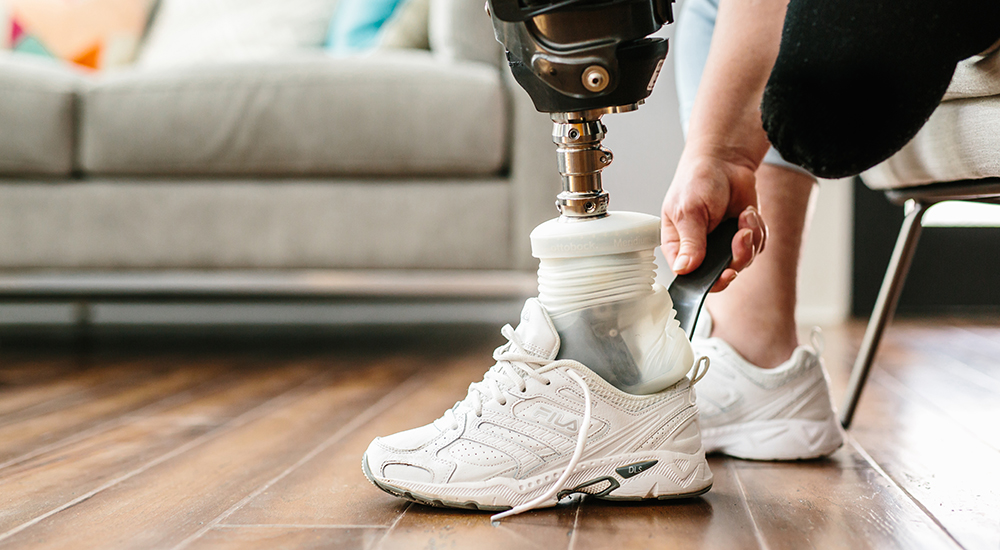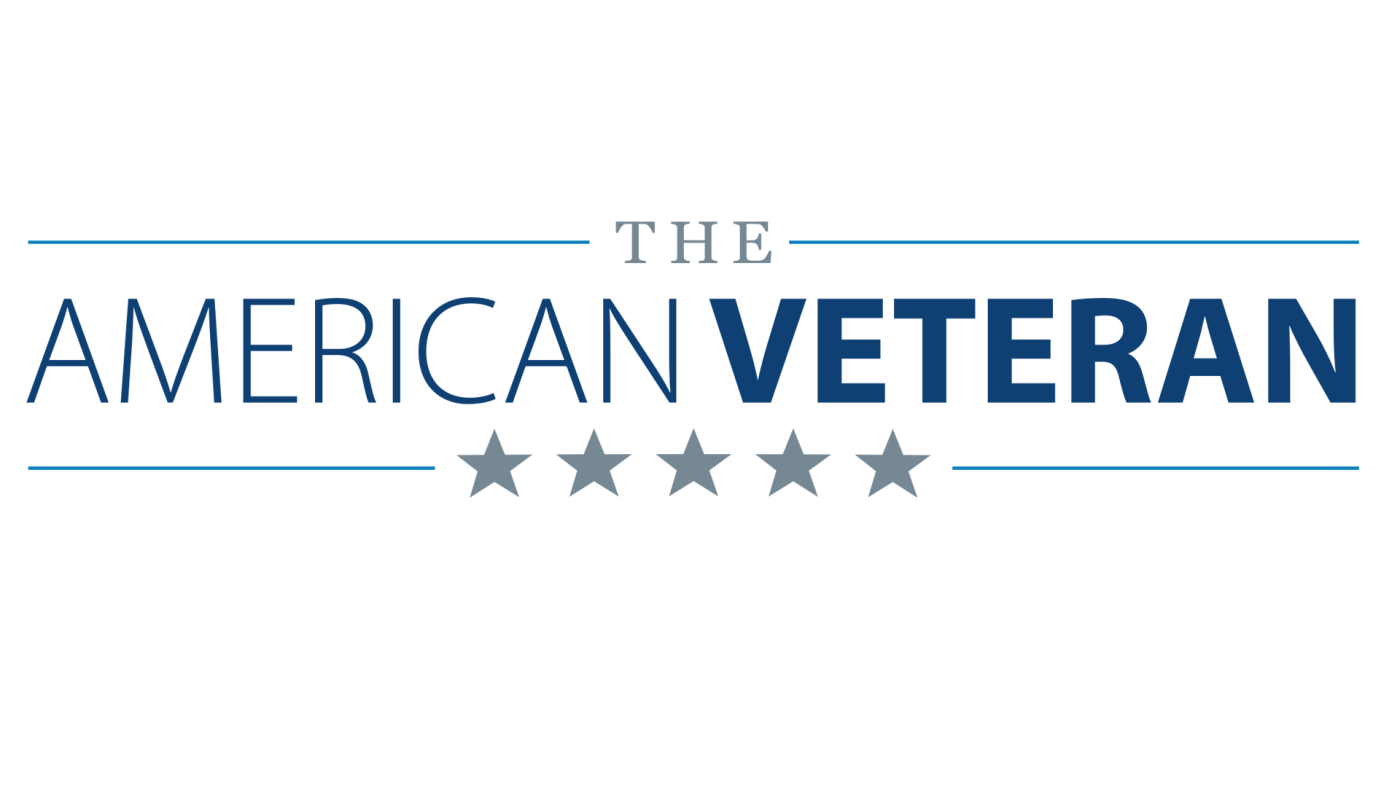A survey of more than 400 Veteran users of upper-limb prostheses found little difference in satisfaction based on device type. Overall rankings fell just shy of "satisfied."
Thanks to VA Video-Connect, Veteran Kenneth Turner does not have to drive four hours for his physical therapy. Video Connect lets Veterans connect with their provider from home, work, anywhere.
Matthew lost part of his left leg while serving in Iraq. VA Puget Sound developed a program to help patients, like Matthew, who have travel challenges and need prosthetic care.
With the help of the Prosthetics Service and 3d printing at the San Antonio VA, Army Veteran David Cromwell has cultivated a passion for sharpshooting.
An amputee exercise and support group meets every Friday at VA Southern Nevada Healthcare System. Since 2017, it has grown from two to 25 members, whose physical and mental health has improved.
The Charles George VA Medical Center is employing a life-changing prosthetic device that helps Veterans regain the ability to walk.
Army Veteran Karl Milner used the MOVE! Program to help shed 200 pounds and become more active, receiving a new prosthetic every 3-4 months.
South Texas VA’s senior prosthetist, Gordon Bosker presented 3-D printing technologies as part of South Texas’ Research Week celebration.
Prosthetics for women Veterans include customized orthotics and artificial limbs and post-mastectomy items. Also, mobility aids such as walkers and wheelchairs. And hearing aids and eyeglasses.
Navy Veteran Robert Chesser received a new prosthetic ear, created for him by prosthetist David Trainer, to replace the ear he lost to cancer.
Veteran Mac McEnery is walking with new prosthetic feet and shares his enthusiasm for his new activities with everyone. VA staff attribute his success to his positive attitude.
This episode of The American Veteran includes a story about Charles Norman Shay, a Native American who landed on Omaha Beach in the first wave on D-Day as a combat medic

